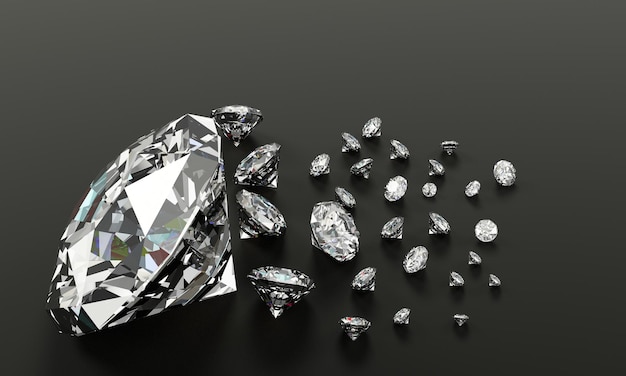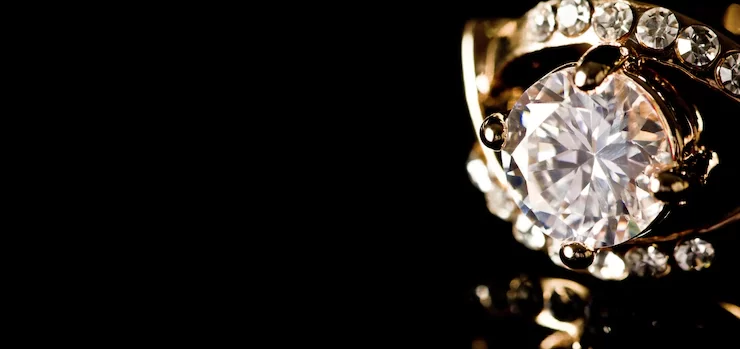How Can You Spot A Fake Diamond
Today’s society considers diamonds a status symbol and an emotional purchase.
This has resulted in people going for brand names and, in turn, paying vast amounts for the jewelry they desire. The outcome of this is the purchase of real and fake diamonds and other gems.
Fake diamonds are becoming a big problem, leaving the industry in turmoil. The jeweler industry has suffered massively, leading to consumers paying massive amounts for authentic jewelry.
Today, you can determine real versus fake diamonds using the tips below. This article will discuss how you can spot a fake diamond.
What Are The Alternative Stones To Real Diamonds

The outlined alternatives to diamonds have different chemical compositions; therefore, you need other methods to differentiate them from genuine diamond stones.
A fake diamond might be any of the following stones:
- White Zircon
- White sapphire
- Cubic Zirconia
- Lab-grown diamond
- Moissanite
- Glass
- White topaz
- Quartz
- White Spinel
How Can You Tell if a Diamond Is Real or Fake?
You can use the following methods to determine if a diamond is real or fake:
1. Use The Water test
Natural diamonds have a high density to them. Slowly drop the stone in a glass of water and watch if it sinks or floats. If it sinks, it’s real; otherwise, if it comes near the water’s surface or floats, it’s a fake.
2. Use The Fog Test
Diamonds typically conduct and lose heat fast. For this test to be effective, hold the diamond between two fingers and puff some air on it. The hot breath forms a light fog on the stone. You have a real diamond on your hands if the fog disappears immediately. Otherwise, if it takes some seconds to dissipate, it’s fake.
3. Use UV Fluorescence
For this test, use a blacklight for the best results. Shine the UV light and observe if the light fluoresces. If the stone emits some blue color, it’s likely a real diamond. If not, then it’s a fake. The blacklight test is, however, non-definitive due to some diamonds lacking any form of fluorescence or having a yellow fluorescence.
4. The Newspaper Test
Although this test is less practical for small diamonds, it can prove helpful in some situations. Place the stone on a newspaper and try to read through it to the paper. A real diamond refracts so much light that you can’t read through it, while a fake one allows you to see through it.
5. Weighing
You can measure your stone using a high-accuracy gem scale and some calipers. Compare the carat weight and width. The weight and width should match the industry standard charts. Also note that topaz, moissanite, and Spinel have similar densities to diamonds.
6. Use a Magnifying Glass
Most real diamonds have some degree of imperfections known as inclusions in them. Using a magnifying glass, inspect the stone for inclusions. If there are none, the stone might be a fake diamond masquerading as one. Flawless diamonds are extremely pricey or made in the lab.
7. The Heat Test
For this test, you need a lighter or a candle. Hold the stone over the heat source for about 45 seconds and drop it into ice-cold water. If the stone shutters are, then it’s a fake. Real diamonds can withstand extreme heat conditions without cracking. The fast contraction and expansion due to heat lead to fake stones such as glass or zirconium breaking easily.
8. The Refractive Dot Test
Similar to the newspaper test, the dot test uses refraction to ascertain the quality of a stone. Use a pen and draw a dot on a piece of paper. Put the stone on the dot with the flat surface as the base. Look through the stone and observe if you can see the dot. Natural diamonds have refractive properties, preventing the visibility of the dot.
9. Reflectivity Test
Diamonds commonly reflect white and gray like sparkling with scatters of rainbow colors around. Diamonds also reflect a fire-like colored light magnificently.
On the other hand, fake stones do not exhibit a white and gray color presence.
10. Professional Diamond Testing Methods
Gemologists utilize thermal conductivity meters to determine the chemical compositions of diamonds. The meter determines the thermal conductivity of a gemstone by warming and measuring the heat dispersion of the stone.
The slower the heat dispersion, the more natural the diamond is, and vice versa. As a jewelry buyer, It’s worth noting that some stones, such as synthetic moissanite have similar or equal heat dispersal as natural diamonds. This means that this test is inconclusive with moissanite.
Gemologists also use a 1200x magnification-powered microscope to scrutinize gemstones. The 1200x microscope reveals inclusions and tiny differences in moissanite compared to real diamonds.
You can also send your cut stones to a lab for an X-ray examination. The x-ray tests can tell if the gemstone has a radiopaque (fake) or a radiolucent (real) molecular structure.
Takeaways
Try our recommended home tests to know whether the stones you have are real diamonds or not. If the home tests are unsatisfactory, seek the help of a professional gemologist. A professional will give you a more detailed report on the authenticity of your gemstone.
Read Also:








